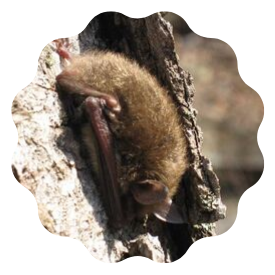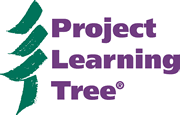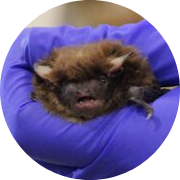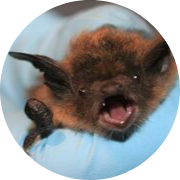Bat Week is Oct 24-Oct 31! Use this annual celebration timed with Halloween to teach kids about the important role bats play in nature. Join Bat Conservation International for a special webinar on October 18 to get you excited and ready for Bat Week!
Webinar | Books, Bats and Breaking Stigmas: Inspiring Bat Conservation Through Literature – October 18, 2023 | 1-2 PM ET
Brian Lies, author and illustrator of the NY Times best-selling bat series, including Bats at the Beach and Bats in the Band, and Leslie Sturges, President of Bat Conservation & Rescue of Virginia, will share their stories about amazing bats. Learn how arts and literature can inspire a lifelong appreciation for bats and help dispel the stereotypes and fears people often associate with bats.
Common Misconceptions about Bats
People often have many misconceptions about bats, which is why it’s so important to help clear up some of those myths and talk about all the reasons bats are amazing! As insect eaters, pollinators, and seed spreaders, bats provide critical services for our ecosystem.
Share these facts about bats with your students and see below for some activities, arts and crafts, writing ideas and other projects for children to learn about bats and bat conservation during Bat Week.
Myth: Bats are blind.
Truth: Have you ever heard someone say, “I’m blind as a bat”? The truth is that all bats can see. In fact, some bats have vision that’s three times better than humans!
Myth: All bats have rabies.
Truth: The reality is that less than 1% of bats have rabies. However, it’s always best to avoid handling ANY wild animal, including bats.
Myth: Bats are dirty.
Truth: Similar to cats, bats groom themselves and are extremely clean!
For more myths and truths about bats, check out this great article from the US Forest Service.
Fascinating Facts about Bats
- Bats are the only mammal that can truly fly (as opposed to gliding mammals like flying squirrels and lemurs.)
- Bats are nocturnal; they sleep during the day and are active at night.
- Zoom! Bats are fast, flying 60 miles per hour. Mexican free-tailed bats can even reach speeds up 100 mph – that’s more than 40% faster than a cheetah!
- Bats come in all sizes: The smallest bat, called a Bumblebee Bat, lives in Thailand and has a wingspan of only six inches. The Giant Golden-crowned Flying Fox is a bat that lives in the Philippines and can grow to have a wingspan of more than five feet!
- There are more than 1,450 species of bats worldwide, accounting for about 20% of all mammal species. Bats are the second largest group of mammals in the world!
- Baby bats are called pups and can be born one-at-a-time or in small litters of two-to-four pups, depending on the type of bat.
- Bats have the longest lives of any similarly-sized mammal. The oldest known bat was at least 41 years old!
- There are two main types of bats: Megabats (who usually eat fruit) and Microbats (who often eat insects.)
- Economists estimate that without bats controlling insect populations, cocoa bean yields would decrease by 30%. That means thirty percent less chocolate for us to eat!
- There are 21 species of bat currently listed as critically endangered, meaning they face immediate risk of extinction.
- Nearly a quarter of bat species worldwide are considered endangered or vulnerable because of disruption of forests, over-harvesting of trees they call home, climate change, and disease. A fungus is causing a disease called “white-nose syndrome” that has significantly decreased many North American bat populations.
Bats Bring Food to Our Table
Bats provide three important ecological functions: pollination, seed dispersal, and pest control – that help bring food to our tables.
1. Pollination

Like hummingbirds, bees, and butterflies, bats are important pollinators.
- Did you know that scientists believe that many groups of plants have evolved to smell tasty to bats? This might be because they are able to carry significantly more pollen in their fur compared to other pollinators.
- More than 500 species of flowers in at least 67 plant families rely on bats as their major or exclusive pollinators.
- Another important way bats serve as pollinators is by flying long distances; this is especially beneficial for plants that grow sporadically or in places far apart from one another.
2. Seed Dispersal
Bats disperse seeds far and wide!
- Do you enjoy dates, figs, bananas, and cashews? Bats help these fruits grow and are often called the “farmers of the tropics.”
- Fruit bats will travel long distances and defecate while they fly, thereby dispersing the fruit’s seeds along their way. As those seeds sprout, the plants that grow provide shelter that allows smaller, more fragile plants to take root beside them.
- Seeds dropped by bats can account for up to 95% of the first new growth in these areas.
Pssst…Looking for PLT curriculum ties?
Download this abridged free PLT activity, adapted from our Explore Your Environment: K-8 Activity Guide and our PreK-8 Environmental Education Activity Guide:
- Have Seeds, Will Travel explores how many plants need the help of animals, like bats, to disperse their seeds – available in English and Spanish.
3. Pest Control

Bats help keep insects in check.
- Many bats can consume their body weight in insects every night!
- By eating up to 1,200 mosquitos an hour, bats help keep pest populations in check and can help reduce the risk of mosquito-borne illnesses while also keeping crop-damaging insects from destroying our fruit and vegetables. You can thank a bat the next time you avoid getting bit by a pesky mosquito!
- Scientists even estimate that bats save the United States an estimated $23 billion in reduced crop damage and pesticide use every year.
Trees are a Bat’s Best Friend
In fact, almost all North American bats rely on forests for survival!
1. Many Bats Call Trees Home
Some bats live in dead and dying trees (called snags), while other bats live in trees that are still alive.

Many bats travel to different trees but it is also not uncommon for some bats to return to the same tree (or group of trees) in the same patch of forest, year after year! These bat-inhabited trees are called roosts and are often located along the edges of forests, or in open forest stands, where bats can safely land and are more likely to receive sunlight and heat. Colonies of more than 500 bats have been recorded roosting in snags, demonstrating just how important a single dead tree can be to help maintain local bat populations.
Most snag-roosting bats prefer trees in the earlier stages of decay with lots of loose and peeling bark while foliage-roosting bats make their homes in the leaves of a wide variety of living trees: both evergreen and deciduous. Eastern red bats from the northern regions of North America will migrate south for the winter, where they will occasionally hibernate beneath the dead leaves that lie on forest floors. Some tree-roosting bats, such as the Seminole bat (Lasiurus seminolus) and northern yellow bat (Lasiurus intermedius), will often roost in clumps of Spanish moss. Other bats, like the northern and southern yellow bats (Lasiurus ega) will roost beneath the dead, hanging fronds of fan palms.
Pssst…Looking for PLT curriculum ties?
Download these abridged free PLT activities, adapted from our Explore Your Environment: K-8 Activity Guide and our PreK-8 Environmental Education Activity Guide:
- Trees As Habitats explores plants and animals that depend on trees to survive – available in English and Spanish.
- A Tree’s Life examines a tree’s lifecycle – available in English and Spanish.
For little learners, try this free abridged activity, Home Tweet Home, from the Trees & Me: Activities for Exploring Nature with Young Children guide. And for an added element of music and movement, have fun singing and dancing to Mister G’s new song, Bats on the Brink!
2. Bats Help Keep Forests Healthy
As primary predators of night-flying insects like moths, beetles and other destructive pests, bats do the same work by night that birds do by day. They either catch the insects in the air, or pick them off of nearby plants.
Most bats prefer to hunt in forest openings or gaps, like those created by timber harvests, roads, and bodies of water like lakes and ponds.
3. Meet a Few North American Bats That Call Trees Home:
Hover over and click on each photo to learn more about the bat species. Can you find the at risk species?
Meet a few of the Faces of Bat Week: the endangered Florida Bonneted Bat and the Indiana Bat.
Bat Activities and Crafts for Kids
Thanks to Bat Conservation International, the Wildlife Habitat Council, United States Forest Service, and NatureWatch, here are some free downloadable resources for families and educators to celebrate #BatWeek:

1. Coloring Pages
Bats have some of the most diverse and interesting faces in the animal kingdom. Let kids express their creativity while also learning about the many different wrinkles, ears, tails, and noses of bats by coloring in these pages originally drawn by famous naturalist Ernst Haeckel in the early 1900’s.

2. Bat Masks
These free printable masks are lots of fun and easy to make.
Just download and print the pages, cut out the mask (including the eye holes), punch holes on both sides of the mask, and attach an elastic string to transform into your favorite species of bat!

3. Habitat Worksheet Pages
How can I determine which bats live in my neighborhood and what physical and biological requirements they have?
Students ages ten and older will learn answers to these and many other bat habitat-related questions through the Predicting Species Occurrence worksheet by using range maps to determine their local bat species.

The Little Brown Bat Habitat worksheet is appropriate for ages seven to eleven.
The worksheet explores the story of a boy and his little brown bat friend. Students will identify what the bat needs to survive and draw a picture of the habitat’s many components.

4. White Nose Syndrome Student Group Activity
White-Nose Syndrome (WNS) is a wildlife disease that is causing large population declines in hibernating North American bats.
This student worksheet is intended for groups of 15 or more and will focus on how infectious diseases like WNS spread. By simulating how bats interact in a cave, students will be able to test to see if they have been “infected” and will learn about doubling effects, exponential growth equations, and growth curves through the interpretation of graphs.

5. Bat Week Cookbook
You will be surprised at just how many recipes call for bat-dependent ingredients, including: coffee, almonds, strawberries, bananas, and so much more! Check out this cook book to learn more about the favorite foods we rely on bats to pollinate, protect from insect damage, and disperse seeds for.

6. Learn How to Garden for Bats
It doesn’t take much to make your outdoor spaces a haven for bats. Download this “Gardening for Bats in Small Spaces” guide and learn how to attract and turn your garden into an important source of food, water, and shelter for our bat friends.
Want to do more? Consider keeping your cat indoors at night, building a bat box, and using less pesticides on your property.

7. Trick-Or-Treat Infographic
Download this Halloween-themed infographic to teach kids about the importance of bats as pollinators.
Whether cucumbers or chocolate, students will want to thank a bat for bringing them something good to eat!

8. Be a Bat Hero!
You don’t need special powers to be a hero for bats!
We hope you’ll support bats by spreading the word about all the good work bats do. For more celebration inspiration, check out these suggestions for: hosting a bat-themed festival, planning an urban bat walk, organizing a bat club at your school, and more fun ways to become a bat advocate!
To learn more about Bat Week visit https://batweek.org/.
Special thanks to Bat Conservation International, the Wildlife Habitat Council, United States Forest Service, and NatureWatch for partnering with Project Learning Tree.









